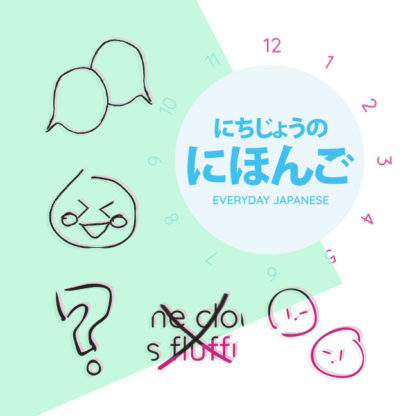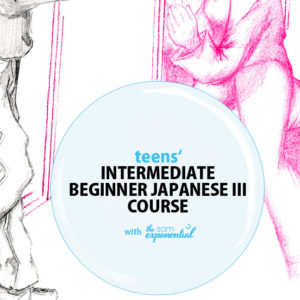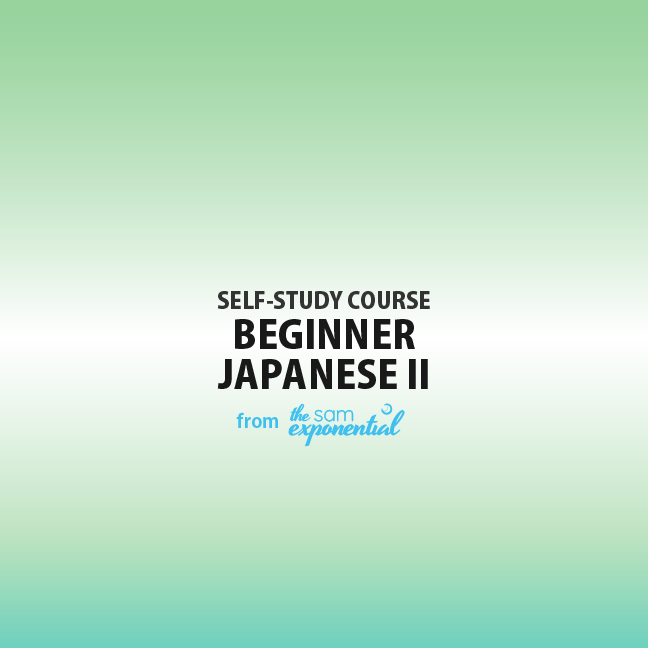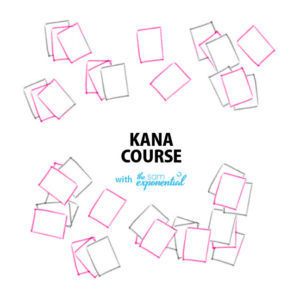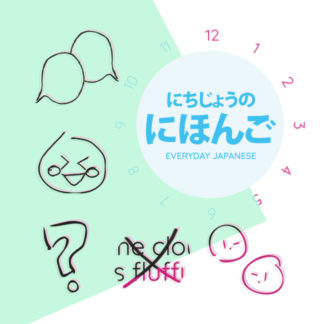Description
These Japanese-only online classes will give your child a sensory system that makes it easy to remember new and not-so-new words. They’ll have a method they can use again and again and know words they can use everyday all day. Plus, how can they not remember when Samansa-Sensei is Silly!
The teaching style and methods I’ve developed have made a huge difference for my students too:
We loved the class!
It’s interactive and love the one-on-one attention.
Jaymie F.
Ruby very much enjoys your teaching and has learned a great deal already.
Michelle F.
Frequently asked questions
Please see the Additional Information tab for pricing and location.
What’s the difference between にちじょうのにほんご Everyday Japanese and こどものにほんご Japanese for Kids?
Here’s a handy-dandy table:
| にちじょうのにほんご Everyday Japanese | こどものにほんご Japanese for Kids |
|---|---|
| once a week | 2, 3 or 6 times a week (you choose) |
| 40 minutes | 20 minutes |
| same format | |
| occasionally same content (we do periodic reviews, so there might be some overlap during classes that week) | |
| kids ages 6+ and families (adults with kids) |
kids ages 6+ |
Are the classes live?
にちじょうのにほんご Everyday Japanese is a 40-minute online course. It is currently taught live, in real time.
Is this an in-person course? My child can’t do any more online classrooms.
There are currently none scheduled but you can request classes at a library closer to you: see all available in-person locations in Chicago, Illinois.
What’s the class size?
Max size is 10 students.
How do I know if this class is right for my child?
If you want to try a class, choose the half-off Trial Attending class option.
When can my child start?
Students can join at any time!
Please note that this is rolling enrollment so the earliest your child can start would be the next class day after you register.
What if my child can’t attend for, say, a month?
No worries! We review material from previous class(es). What they miss will come around again. The daily Gee Whiz, Quick Quiz! also helps them pick up some of the new words and phrases.
But, have them jump back into class as soon as they can. They’ll start to forget words they don’t use.
And, if you’re taking the online classes, you don’t need to tell me if they’ll be missing class or not!
(Please note it’s a little different for in-person classes due to the time commitment.
If you come to in-person classes, then you have to let me know if you can’t attend an hour or more before the session. This is when I start driving. 1 class will be subtracted from all students who don’t show up without notifying me an hour or more before.)
Is there a textbook? Is there homework?
There isn’t a textbook but there is The To-dos & Things Table I put up for the activities we do each month. This list will help you prep the items used in class—I’ve found that being able to interact with our senses makes a big difference in how well we remember something.
The only ‘homework’ is to use the things learned in class when your child runs across the item or situation as they go about their day.
How can my child get the most out of the lessons?
Go through the Orientation Station together. (You may need to have them watch the Refresher video right before class for the first few weeks until they get the hang of what they should be doing.)
It’ll walk through
- the Robot R(ecalibration) & R(evitalization) Routine, the signature learning method we’ll use in each class and across the weeks.
- how to use The To-dos & Things Table, the monthly chart of activities we’ll do and words we’ll learn and review with space to write the Japanese.
- what to do with the daily Gee Whiz, Quick Quiz! emailed directly to your inbox.
- the rules for the Samansa-Sensei is Silly! game that gives your child instant feedback on pronunciation and words.
My child has a hard time remembering things. Will this really work?
The Robot R(ecalibration) & R(evitalization) Routine is all about cutting the noise. We’re going to take the middlemen (other languages) out of the equation and go back to basics. We weren’t born knowing a language—that doesn’t happen for over a year—so we don’t need any to learn Japanese.
Also, Japanese and English are fundamentally different languages so borrowing their mind’s English language paths to learn Japanese sets your child up for a much rougher time than it needs to be.
The process, their progress, may feel slow at first since they’re creating new connections in their head instead of building off of ones that already exist, but we’ll reuse those new connections over and over again to make them stronger. And stronger bridges means they can get to the words much faster.
In the long run, they’re saving tons of time. No running things through the English filter to get the word they need in Japanese: they’ll just know it.
How do I know if my child is picking up the Japanese?
My students typically start to show progress after about 3 weeks. Many of them also consume Japanese media outside of class and that’s a great way to reinforce what they learn in class.
(Of course, results will vary since everyone is different.)
My child is really shy. Do they have to participate?
If you mean, do they have to have their mic on? Then the answer is no. They can be muted.
But, yes, they do have to participate on their side of the screen.
Participating would be
- Doing the activities along with the teacher.
- Repeating what is said.
- Recalling the words or phrases for what is shown to them.
- Playing Samansa-sensei is Silly! in the last 5 minutes, where the teacher has to do whatever actions they call out in Japanese.
For the last one, your child can still learn a lot by listening to the other students, watching and hearing my response to what other students are asking me to do, and, again, repeating what is said even if your child doesn’t say it to the class.
This sounds fun! Is there an age limit?
With this learning method, it doesn’t matter how old or young you are but I’m limiting it to ages 6 and above. Students younger than this would need an adult to be constantly present since I won’t be able to corral them if they walk away from the screen.
Teenagers can even pair these classes with the Teens’ Beginner Japanese courses.
Smaller children may still need a parent to review the format and method with them the first few weeks outside of the lesson and help keep them focused from time to time during class.
If you know your child really can’t sit through 40 minutes, try the shorter こどものにほんご Japanese for Kids classes.
Even if your child hasn’t started writing yet, they’ll still get a lot out of the course. Writing only occupies 3 or 4 minutes of each class. I highlight characters that pop up frequently in words; they (or you) can choose one to practice during that time.
What if they’re a total beginner? They’ve never studied a language before.
Great! Language classes, immersion or not, generally rely on textbooks that use English or another language to teach. にちじょうのにほんご Everyday Japanese doesn’t use any except in the Orientation Station, where I detail exactly how the classes will go and what you should do before, during and after every class.
So, if they’ve never tried to learn another language, they’ll come into this class with an open mind about how to truly understand the Japanese language.
Wait . . . Is it a problem, then, if they’ve taken Japanese classes?
Not at all!
They’ll probably need a little more time to get used to the method—it is asking them to reset the way they look at things—but knowing some Japanese or having Japanese classes under their belt won’t be a problem as long as their mind is on what we’re doing. The course is also set up to help them do this mindset shift through different activities. We’ll figure this out together!

